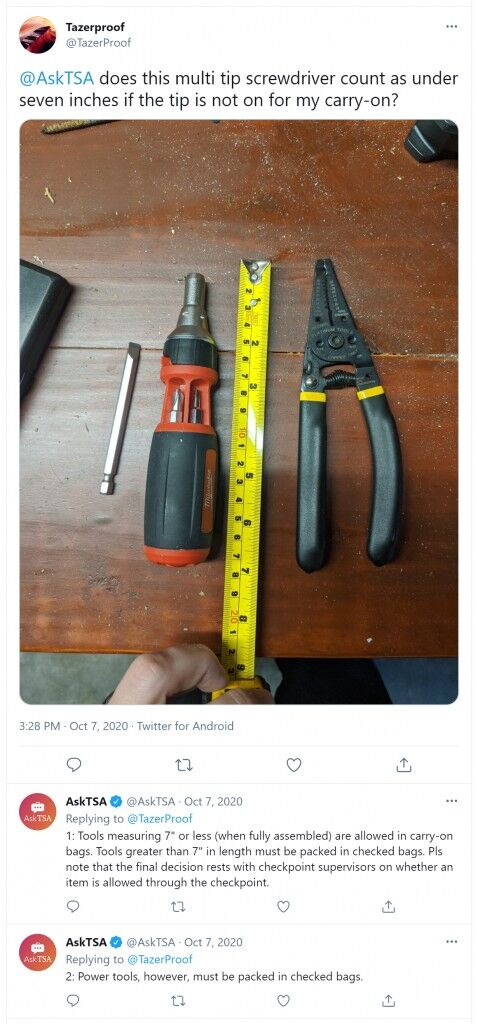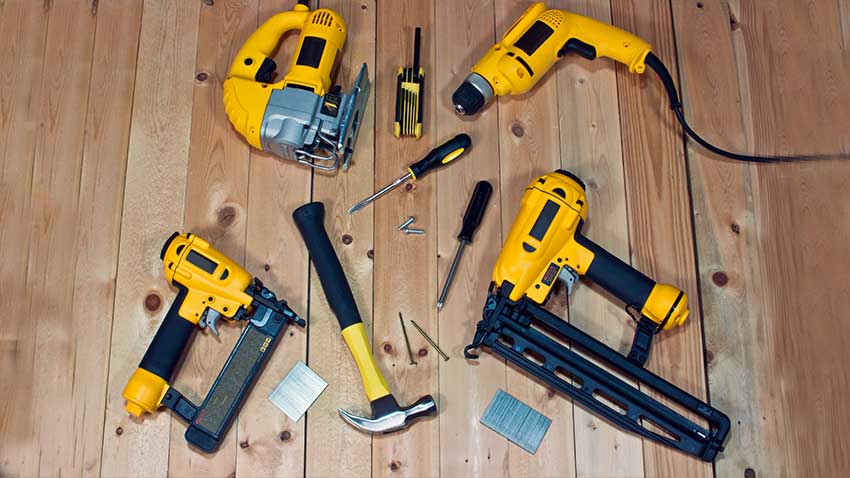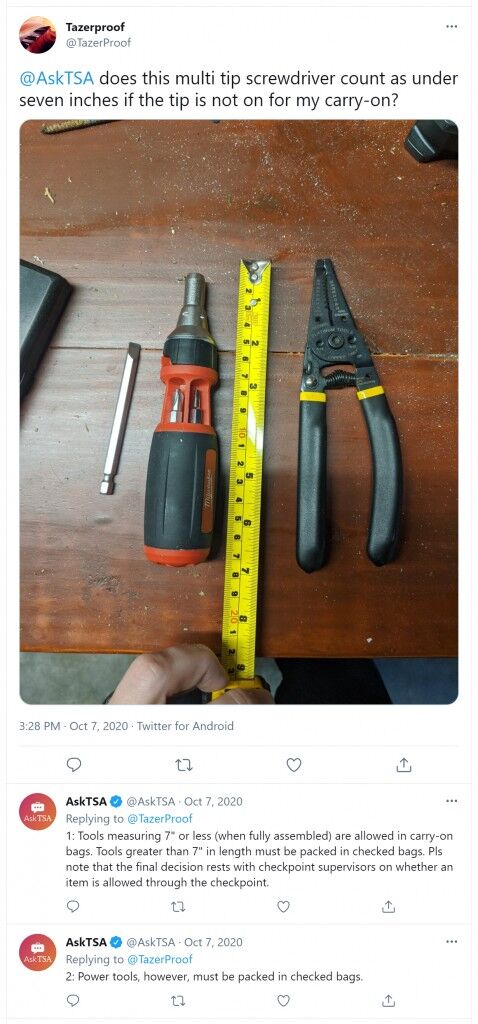If you’ve ever wondered about traveling with power tools on a plane, you’re in the right place! Can you travel with power tools on a plane? Let’s explore the ins and outs of this topic together.
So, picture this: you’ve got an exciting DIY project waiting for you at your destination, and you’re wondering if you can bring your trusty power tools with you. Well, the short answer is yes, but there are a few things you need to know and consider before packing your toolbox.
In this article, we’ll dive deep into the rules and regulations surrounding traveling with power tools on a plane. From understanding the TSA guidelines to packing your tools safely, we’ve got you covered. So let’s buckle up and get ready for a tool-tastic adventure!
Wondering if you can bring power tools on a plane? While it’s generally allowed, there are some guidelines to follow. Firstly, ensure that the tools are placed in checked baggage rather than carry-on. Make sure they are properly packed and protected to prevent damage. It’s also a good idea to remove any sharp or dangerous components and place them in a safe container. Remember, always check with your airline for any specific restrictions or regulations.

Can You Travel with Power Tools on a Plane? Exploring the Rules and Regulations
Traveling with power tools can be a necessity for professionals or a convenience for DIY enthusiasts. But can you bring these tools on a plane? Understanding the rules and regulations regarding power tools and air travel is crucial before you head to the airport. In this article, we’ll delve into the details of traveling with power tools, including what is allowed, restrictions, and tips for a hassle-free journey.
Bringing Power Tools on a Plane: The Guidelines
When it comes to traveling with power tools, it’s essential to be aware of the guidelines set by airlines and transportation security authorities. Here’s what you need to know:
1. Carry-On or Checked Baggage?
The first decision to make is whether to pack your power tools in your carry-on luggage or to check them. In general, power tools are prohibited as carry-on items due to their potential to cause harm or damage. However, there are exceptions for smaller tools that meet specific criteria, such as screwdrivers or pliers. It’s always best to check with your airline for their specific policies before your trip.
If you choose to pack your power tools in checked baggage, it’s important to ensure they are properly secured to prevent damage during transit. It’s recommended to use a sturdy toolbox or protective case and to pack them in a way that minimizes movement.
Remember to remove any batteries or fuel sources from your power tools before packing them. Lithium-ion batteries have specific transportation requirements and may need to be carried separately. Consult the airline’s guidelines and regulations regarding batteries to ensure compliance.
2. Restricted Power Tool Types
While some power tools can be brought on a plane, others are restricted or prohibited altogether. High-powered tools like chainsaws, angle grinders, or large drills are generally not allowed in either carry-on or checked baggage due to safety concerns. These tools may have sharp edges or blades, making them potentially dangerous in a confined space.
On the other hand, hand tools that are less powerful or have smaller dimensions, such as small drills or compact saws, may be allowed in checked baggage. However, it’s crucial to confirm the specific restrictions with the airline beforehand, as regulations may vary.
Keep in mind that even if a power tool is allowed on the plane, it may still be subjected to additional security screening at the airport. Be prepared for potential delays and cooperate with security personnel to ensure a smooth travel experience.
3. Additional Precautions
When traveling with power tools, it’s important to take additional precautions to ensure a safe journey:
- Secure loose parts or accessories to minimize shifting during transportation.
- Wrap sharp-edged tools in protective material to avoid injuries and damage.
- Follow manufacturer instructions for disassembling or removing batteries, if necessary.
- Consider insuring your power tools in case of loss or damage during transit.
4. International Travel Considerations
If you plan to travel internationally with power tools, it’s crucial to research and comply with the regulations of both your home country and your destination. Different countries may have varying rules regarding power tools, especially if they are considered controlled or restricted items.
It’s advisable to consult with the respective embassies or consulates or check official government websites for up-to-date information on international travel requirements for power tools. This will help you avoid any unwanted surprises or legal issues upon arrival in your destination country.
5. Tips for a Smooth Travel Experience with Power Tools
Here are some additional tips to make your travel experience with power tools as seamless as possible:
- Research and familiarize yourself with the airline’s guidelines and restrictions before your trip.
- Label your power tools with your contact information to minimize the risk of loss.
- Arrive at the airport early to allow for extra security screening and to prevent any last-minute complications.
- If possible, disassemble your power tools and pack them in separate compartments to maximize space and minimize damage.
- Consider renting tools at your destination instead of bringing them with you, especially for short trips.
The Benefits of Traveling with Power Tools vs. Renting or Purchasing
Traveling with power tools can offer several benefits compared to renting or purchasing tools at your destination:
- Convenience: Having your own tools allows you to work comfortably with familiar equipment.
- Cost-effectiveness: If you frequently travel for work or projects, bringing your own tools can be more cost-effective in the long run compared to renting or purchasing each time.
- Productivity: With your tools at hand, you can start working immediately without relying on availability or quality of rented or borrowed tools.
Conclusion: Traveling with Power Tools is Possible with Proper Planning
While traveling with power tools on a plane may come with its challenges, it is possible with proper planning and adherence to regulations. Before your trip, ensure that you are aware of the guidelines set by the airlines and follow them accordingly. Pack your tools securely and remove any batteries or fuel sources to ensure compliance and prevent any potential damage. By being well-prepared and informed, you can ensure a smooth and hassle-free travel experience with your power tools.
Key Takeaways: Can You Travel with Power Tools on a Plane?
- Transporting power tools on a plane is generally allowed, but there are restrictions and guidelines to be followed.
- Check the airline’s specific rules and regulations regarding power tool transportation before your trip.
- Power tools must be properly packed and secured in your checked baggage, ensuring they won’t pose any safety hazards.
- Remove any batteries from the power tools and pack them separately in your carry-on luggage.
- It’s always recommended to check with the TSA (Transportation Security Administration) for the latest guidelines and updates on traveling with power tools.
Frequently Asked Questions
Are you wondering about the rules and regulations for traveling with power tools on a plane? Here are some common questions and answers to help you navigate this topic.
1. Can I bring power tools in my carry-on luggage?
Unfortunately, according to TSA regulations, power tools such as drills, saws, and nail guns are not allowed in carry-on luggage. These items are considered potentially dangerous and can pose a security risk during the flight. However, you can still bring them in your checked baggage, as long as they are properly packed and meet weight and size restrictions.
Remember to remove any batteries from the power tools and pack them separately in your carry-on baggage. It’s also a good idea to check with your airline for any additional restrictions they may have regarding power tools in checked baggage.
2. Why are power tools not allowed in carry-on luggage?
The reason power tools are not allowed in carry-on luggage is mainly due to safety concerns. Power tools can have sharp edges and contain batteries that could potentially ignite and cause a fire. By restricting these items from carry-on baggage, the TSA aims to ensure the safety and security of all passengers on the plane. It’s important to follow these regulations to maintain a secure and risk-free flying experience for everyone.
If you need your power tools at your destination, it’s best to plan ahead and find alternative options, such as shipping them or renting tools locally.
3. Can I bring cordless power tools on a plane?
In general, you can bring cordless power tools on a plane, but there are certain restrictions to keep in mind. Always check airline and TSA guidelines for the specific restrictions and limitations on batteries, as different airlines may have varying policies.
When transporting cordless power tools, ensure that the batteries are properly installed in the tools or packed separately in your carry-on baggage. It’s important to note that loose batteries or those inserted in power tools must be protected to prevent accidental activation. For added safety, consider bringing lithium-ion batteries in your carry-on baggage, as they have restrictions on being checked in due to fire hazards.
4. What about smaller hand tools like screwdrivers and pliers?
Good news! Smaller hand tools such as screwdrivers, pliers, wrenches, and similar items are generally allowed in both carry-on and checked baggage. These tools are not considered as dangerous as power tools and are permitted as long as they abide by size and weight restrictions set by the airline and the TSA.
Remember to double-check the specific regulations of the airline you’re traveling with to ensure a hassle-free experience at the security checkpoint.
5. Are there any restrictions on power tool accessories?
Power tool accessories, such as drill bits and saw blades, are usually allowed in both carry-on and checked baggage. However, it’s important to note that they must be properly packed to prevent any injuries during handling. Securing them in a sturdy case or container is recommended to prevent any accidental damage or harm to other passengers or airport personnel.
As always, be mindful of weight and size restrictions imposed by the airline, and it’s a good idea to check with them beforehand for any specific guidelines regarding power tool accessories.

Summary
When it comes to traveling with power tools on a plane, there are some important things to know. First, you cannot bring tools that contain flammable or hazardous materials. Second, you must pack your tools properly in a sturdy case to prevent damage. Finally, it’s always best to check with the airline beforehand to make sure they allow power tools on board.
Remember, safety is the number one priority, so it’s crucial to follow all regulations and guidelines. By being informed and prepared, you can ensure a smooth and hassle-free journey with your power tools.
